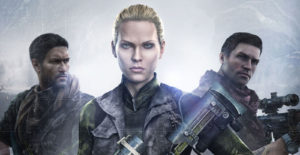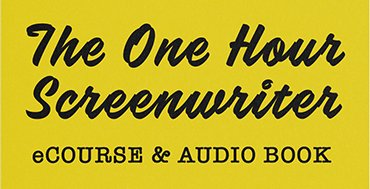#ThinkpieceThursday – Writing Characters for Video Games and Action Movies
Thinkpiece Thursday


Most of the dialogue and interpersonal drama in a video game occurs in the “cut-scenes”, which are mini-movies before or after gameplay action. Viewing these scenes is usually “earned”. A player must fight to get to a certain point, at which, the cut-scene is revealed. The cut-scene puts the fighting in perspective and provides character and story elements to the game.
Sniper: Ghost Warrior 3 has a very interesting story and powerful relationships between characters (outlined in the most basic form before I arrived on the scene). It is a Power of Truth story filled with betrayals between brothers and brothers-in-arms, paranoia, emotional landmines, twists, turns, and surprise reversals. There is are two women at the center who figure prominently in the romantic betrayal, which kicks the story into a higher emotional gear.
The story is set in The Republic of Georgia. The country is at the intersection of Europe and Asia. Which makes it of immense strategic and military importance. Georgia is a former Soviet republic and is still at odds with Putin’s Russia. The terrain encompasses Caucasus Mountain villages to the Black Sea beaches. It’s famous for Vardzia, a sprawling cave monastery dating to the 12th century, and the ancient wine-growing region Kakheti. The game has an interesting political dimension and complicated partisan loyalties. I think the storyline would make a great action movie.
In a video game gameplay is king. The story is meant to put the gameplay in context and make it more emotional. Every character moment must count because cut-scenes are limited. Likewise, in action movies. In a ninety to 120-minute movie, there are about 15 to 20 minutes of real character time. Character is action so everything a character does should be indicative of who he or she is but the deep interpersonal moments that carry powerful emotional weight is limited. Every one of these character moments must count.
That’s why, to toot my own horn, I think The Emotional Toolbox is so valuable. Once you have a character typed, you have a whole emotional matrix to work with specific to that kind of character plus dozens and dozens of clear examples that show how those emotions play out.
For the whole array of Character Types visit my store to read up on the detailed ebooks on each Character Type. Or search my website for hundreds of examples and blog posts on each type of character.
SaveSave
SaveSave
SaveSave
SaveSave



Create a visual map for a character’s emotional journey. Pull stories from character rather from rote story structure beats. Some of the largest international media companies, use this in story and character development.


A clear concise guide for writers and producers to have by their side as they embark on a project. It gives a really vital reminder of what is key for story success.

No comment yet, add your voice below!